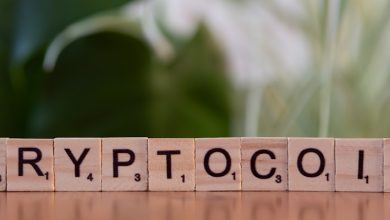Exploring NFT Basics: What Beginners Should Know About Non-Fungible Tokens

- Understanding the concept of non-fungible tokens (NFTs)
- How NFTs are revolutionizing the digital collectibles market
- Key features that differentiate NFTs from other digital assets
- Exploring the various uses and applications of NFTs
- Tips for beginners looking to get started with NFTs
- Potential risks and challenges associated with investing in NFTs
Understanding the concept of non-fungible tokens (NFTs)
Non-fungible tokens (NFTs) have been gaining popularity in the digital world, especially in the realm of art and collectibles. Understanding the concept of NFTs is crucial for beginners looking to delve into this unique form of cryptocurrency. NFTs are digital assets that represent ownership of a unique item or piece of content, such as artwork, music, or videos. Unlike cryptocurrencies like Bitcoin or Ethereum, which are interchangeable with one another, NFTs are one-of-a-kind and cannot be exchanged on a like-for-like basis.
NFTs are built on blockchain technology, which ensures that each token is verifiable, secure, and transparent. This means that the ownership and authenticity of an NFT can be easily traced back to its original creator. When someone purchases an NFT, they are essentially buying a digital certificate of ownership for that specific piece of content. This ownership is recorded on the blockchain, making it tamper-proof and immutable.
One of the key characteristics of NFTs is their indivisibility. This means that NFTs cannot be split into smaller units like cryptocurrencies can. Each NFT exists as a whole, unique entity on the blockchain. This uniqueness is what gives NFTs their underlying value and appeal to collectors and investors alike. The scarcity and exclusivity of NFTs contribute to their high market demand and potential for appreciation in value over time.
In addition to their value as digital collectibles, NFTs have also opened up new possibilities for creators and artists to monetize their work in innovative ways. By tokenizing their art or creations as NFTs, creators can reach a global audience and receive direct support from their fans and supporters. This direct connection between creators and consumers has the potential to revolutionize the way art is bought, sold, and appreciated in the digital age.
As the NFT market continues to evolve and expand, it is essential for beginners to educate themselves on the basics of NFTs and how they function within the broader cryptocurrency ecosystem. By understanding the concept of NFTs and their unique features, newcomers can navigate this exciting new space with confidence and clarity.
How NFTs are revolutionizing the digital collectibles market
NFTs have been making waves in the digital collectibles market, revolutionizing the way we buy, sell, and trade unique items online. These non-fungible tokens are based on blockchain technology, making them secure and verifiable. One of the key advantages of NFTs is that they can represent ownership of digital assets in a way that was not possible before.
Unlike traditional cryptocurrencies like Bitcoin or Ethereum, each NFT is one-of-a-kind and cannot be exchanged on a one-to-one basis. This uniqueness is what makes NFTs so appealing to collectors and creators alike. Artists, musicians, and even sports teams have been quick to capitalize on this trend, offering limited edition NFTs to their fans and supporters.
Another factor driving the popularity of NFTs is the sense of exclusivity they provide. Owning an NFT means owning a piece of digital history, whether it’s a rare artwork, a special edition album, or a memorable sports moment. With NFTs, collectors can showcase their unique digital assets in a way that is both tangible and prestigious.
Key features that differentiate NFTs from other digital assets
One key feature that sets NFTs apart from other digital assets is their uniqueness. Unlike fungible tokens such as cryptocurrencies, NFTs are indivisible and cannot be exchanged on a like-for-like basis. Each NFT is distinct and one-of-a-kind, making them valuable as collectibles or digital assets.
Another distinguishing factor of NFTs is their immutability. Once a non-fungible token is created and recorded on a blockchain, it cannot be altered or replicated. This feature ensures the authenticity and ownership of the digital asset, providing a level of security and trust to both creators and buyers.
Additionally, NFTs offer programmability, allowing creators to embed specific attributes or functionalities within the token itself. This feature enables smart contracts to be executed automatically based on predefined conditions, adding a layer of interactivity and functionality to the digital asset.
Furthermore, NFTs have a transparent and traceable ownership history due to the nature of blockchain technology. This feature allows anyone to verify the provenance and ownership of an NFT, promoting trust and authenticity within the digital asset ecosystem.
Overall, these key features differentiate NFTs from other digital assets and contribute to their growing popularity and adoption across various industries.
Exploring the various uses and applications of NFTs
NFTs have gained popularity in recent years due to their versatility and potential applications across various industries. These digital assets can represent ownership of unique items, such as artwork, music, virtual real estate, and even in-game items. The blockchain technology behind NFTs ensures that each token is one-of-a-kind and cannot be replicated or exchanged for another token of equal value.
One of the most common uses of NFTs is in the art world, where artists can tokenize their work and sell it as a digital asset. This allows creators to reach a global audience and receive royalties every time their art is sold or traded. Additionally, NFTs can be used to prove ownership of physical assets, such as real estate or luxury goods, by linking a digital token to a physical item through a unique identifier.
In the entertainment industry, NFTs are being used to create unique experiences for fans, such as exclusive access to concerts, meet-and-greets with artists, or limited edition merchandise. These tokens can also be used in gaming to provide players with rare in-game items or characters that can be traded or sold on NFT marketplaces.
Overall, the uses and applications of NFTs are vast and continue to evolve as more industries adopt this technology. From art and entertainment to real estate and gaming, non-fungible tokens offer a new way to buy, sell, and trade digital assets in a secure and transparent manner.
Tips for beginners looking to get started with NFTs
For beginners interested in diving into the world of NFTs, there are a few key tips to keep in mind to get started on the right foot. First, it’s crucial to do your research and educate yourself on what NFTs are and how they work. Understanding the basics will help you navigate the market more effectively and make informed decisions when buying or selling non-fungible tokens.
Another important tip for beginners is to start small. Don’t feel pressured to invest a large amount of money right away. Instead, dip your toes in the water by purchasing a lower-priced NFT to get a feel for the process. This way, you can learn the ropes without risking a significant amount of capital.
Additionally, be sure to familiarize yourself with the different marketplaces where NFTs are bought and sold. Each platform has its own unique features and fees, so it’s essential to compare your options before making a purchase. Some popular NFT marketplaces include OpenSea, Rarible, and Foundation.
Finally, don’t be afraid to ask for help or seek advice from more experienced NFT collectors. Joining online communities, forums, or social media groups dedicated to NFTs can provide valuable insights and guidance as you navigate this exciting new space. Remember, everyone starts as a beginner, and there is a wealth of knowledge out there waiting to be tapped into.
Potential risks and challenges associated with investing in NFTs
Investing in non-fungible tokens (NFTs) can be an exciting opportunity for beginners looking to enter the digital asset market. However, it is important to be aware of the potential risks and challenges associated with NFT investments.
One risk to consider is the volatility of the NFT market. Prices of NFTs can fluctuate wildly, making it possible to either make a significant profit or incur substantial losses in a short period. It is crucial to carefully research and analyze the market trends before investing in NFTs.
Another challenge to be mindful of is the risk of scams and fraud in the NFT space. Since NFTs are based on blockchain technology, they are susceptible to hacking and counterfeit activities. It is essential to verify the authenticity of the NFT and the reputation of the seller before making any purchases.
Additionally, the lack of regulations in the NFT market poses a risk to investors. Without clear guidelines and oversight, it can be challenging to resolve disputes or seek recourse in case of fraudulent activities. It is advisable to exercise caution and due diligence when engaging in NFT transactions.
Moreover, the environmental impact of NFTs is a growing concern in the digital asset community. The energy consumption associated with minting and trading NFTs has raised questions about the sustainability of this market. It is important to consider the environmental implications of NFT investments and explore eco-friendly alternatives.
In conclusion, while NFTs offer exciting opportunities for beginners in the digital asset space, it is crucial to be aware of the potential risks and challenges associated with this market. By staying informed, conducting thorough research, and exercising caution, investors can navigate the NFT landscape effectively and make informed decisions.



